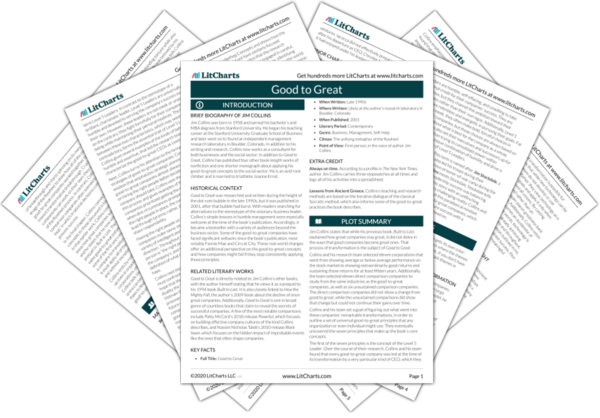By ending with a story about much different setting than the corporations discussed throughout the book, Collins emphasizes again that anyone and any organization can use good-to-great concepts, and that greatness can show up anywhere as long as the concepts are applied consistently. The team’s simultaneous systemic rigor and self-motivation gives a final example of powerful duality, while the enthusiasm of everyone involves shows, once again, that being the right person depends mostly having values and passions that match those of the organization.


